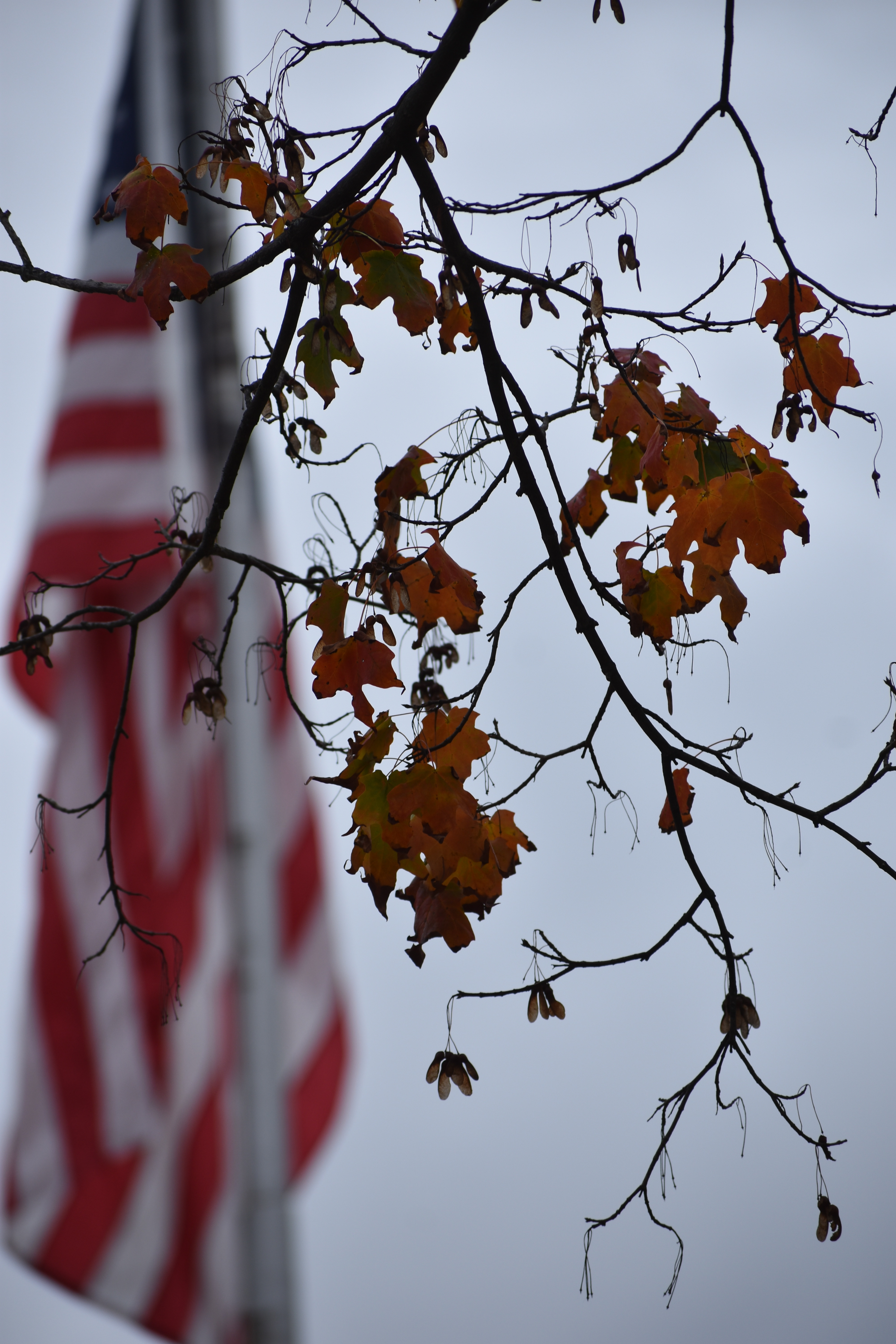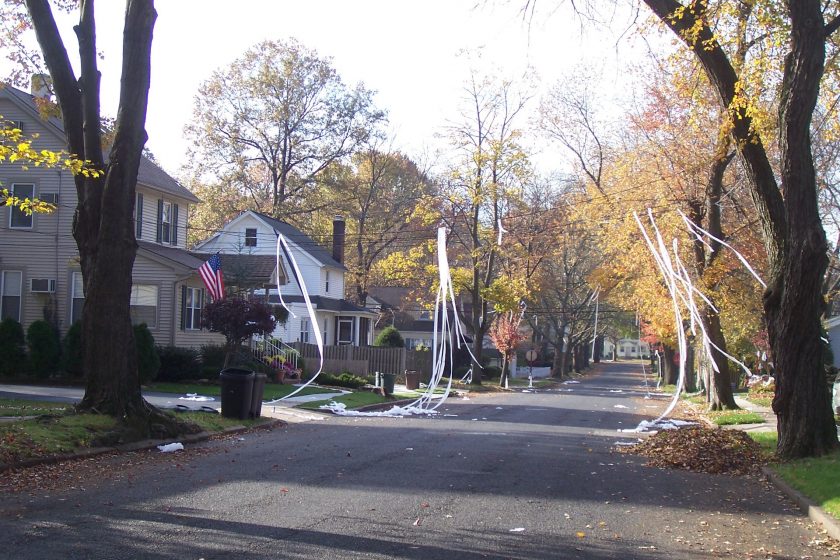
BY JOHN SNYDER
OF PASCACK PRESS
WESTWOOD, N.J.—A member of the Shade Tree Advisory Committee, speaking as a private citizen, is calling on Westwood officials to budget more to plant and preserve trees.
If they don’t, warns the committee member, James Drew, “The future for Westwood trees is bleak.”
Drew said, “I am not a professional arborist but I would say we need at least 100 new tree plantings each year and an annual budget of $50,000.”
A borough trust fund for shade trees bears approximately $5,000, with funds raised largely through fines, and the borough has a line item for trees, he said.
Meanwhile, the chair of the committee, Beth Staples, says she is likely to request closer to $25,000 in the new budget “to start the ball rolling.”
Both agree that members of their committee are frustrated following the borough attorney voicing a legal opinion that the borough not turn to volunteers to plant trees but rather rely on the Department of Public Works, which already plants trees on the public right of way at residents’ request.
The committee members worry that there aren’t enough residents requesting shade trees within the town easement or on their front or back yards to sustain the borough’s canopy over the long term.

Drew, writing to Pascack Press on Feb. 10, said more than 70 borough trees were felled in 2018, with not enough replacing them.
“For every public tree planted at least four are cut down. Unfortunately, this pattern has been going on for years. Mill Street and Third Avenue are examples of this plight,” Drew said.
Of his call for significant new funds, much of which would go to a contractor to plant and preserve trees, he said restricting planting of new trees only to those who only want them ties the borough’s hands.
“It doesn’t take a crystal ball to see the future on the streets of Westwood is not green but very bleak. To sit back and do nothing is to witness the slow denuding of Westwood,” he said.
He explained that preservation includes fertilizing, pruning, wrapping the trunk of trees to hinder deer from eating the bark, “and anything that is necessary to help the tree survive.”
He added, “Suburban America is dealing with the same problems. Hopefully, we can come up with some solutions.”
‘A healthy canopy is vital’
The committee says on the borough website that a healthy shade tree canopy is vital to suburban communities as trees absorb carbon dioxide (CO2) and release oxygen back into the air.
“In just one year, an acre of mature trees can absorb the amount of CO2 produced by driving a car 26,000 miles. This same acre of mature trees can provide enough oxygen for 18 people. In addition, they help to cool community streets while providing a haven for birds and other wildlife,” the committee says.
The page copy says the committee aims to plant 25–30 new trees each fall in the town easements between municipal sidewalks and the street. The borough takes care of the trees in the public right of way between the sidewalk and the curb.
The committee also encourages residents to consider planting trees on their side of the easement, on front and back yards.
In addition to their beauty, trees planted strategically around a single-family home can cut summer air conditioning needs by up to 50 percent, the committee says.
“These same trees can slow the water evaporation from thirsty lawns, reduce stormwater runoff, and prevent soil erosion. The shade provided by trees shields adults and children from harmful ultraviolet rays, and a leafy canopy can muffle the sound from roadways,” the committee adds.
Department of Public Works Chief Rick Woods told Pascack Press on Feb. 13 that the borough plants a variety of trees, from zelkova (a genus of six species of deciduous trees in the elm family) to oak and maple and “anything the Shade Tree Committee wants.”
He said the DPW used to plant approximately 50 trees a year but that’s dwindled as residents have shied away from having them in front of their homes and power lines.
“Some people think you can plop a tree anywhere. You can’t do that. Now we go according to how many people really want them so they’ll take care of them,” he said.
Woods estimated that in 2018 he planted about equal numbers of trees in spring and fall, for 25 or so total.
Where there’s a will
Staples, reached for comment Feb. 13, said “Our problem isn’t so much the money for the trees as it is getting manpower to plant them and having people willing to plant them in their yards.”
She said the easement isn’t the best area to plant them. “So the tree already needs some help because you don’t have all that expansive land for the root structure to grow.”
She said some residents have told her they don’t want to rake leaves or worry about their sidewalks getting pushed up.
“We’ve done press releases, but residents aren’t beating down the door,” she said.
The committee agreed that if the DPW can have the spaces marked then the borough can have a company plant more trees, she said.
Asked her view of Drew reaching out ahead of the budget request—which was set for last week but delayed—she said, “It’s been an ongoing situation. We’re all frustrated. We need to do something now if there’s going to be any canopy in the next 20 to 30 years.”
Council taking action
Meanwhile, Borough Council minutes show tree expert Bill Murtaugh was to present to the committee last October on how to plant more trees.
And on Dec. 4, 2018, Council President and Shade Tree Committee Liaison Chris Montana presented on the committee’s proposed operations plan, which he called “a comprehensive and impressive road map.”
Council minutes show officials agreed the document needed tweaking.
Reached for comment Feb. 11, Montana told Pascack Press that taking some trees down is a matter of public safety, with more than half of Westwood’s tree inventory mature and many damaged by intense storms, insects, and other environmental factors.
He explained that upon receipt of a resident complaint or request for removal of a borough tree in the right of way, the DPW will inspect the tree, sometimes in consultation with a local arborist.
Trees typically are removed over “public safety, public necessity, or unavoidable development,” Montana said.
Montana said that the borough pays for replacement trees out of its trust, which he said “has provided sufficient funding for all planting requests made by residents” in each of his four years as council liaison.
Drew suggested he’s looking at the bigger picture.
“This situation has caused the Shade Tree Committee to look to the services of a private contractor. This is an expensive alternative. It costs approximately $400 to plant one tree. Just to replace the 70-plus trees that were cut down last year would cost about $30,000,” Drew said.
He added, “I have all the respect in the world for Chris Montana. He is a dedicated, concerned citizen. However, we differ when it comes to the Shade Tree Trust Fund.”
Any resident who wishes to have a tree planted within the municipal right of way can call the Westwood Shade Tree Advisory Committee at (201) 664-7100 ext. 149 and leave a name, address, and telephone number.
The Shade Tree Advisory Committee next meets March 12 at 6:30 p.m. at the Municipal Complex, 101 Washington Ave.
The mayor and Borough Council next meet there Feb. 19 at 8 p.m.
